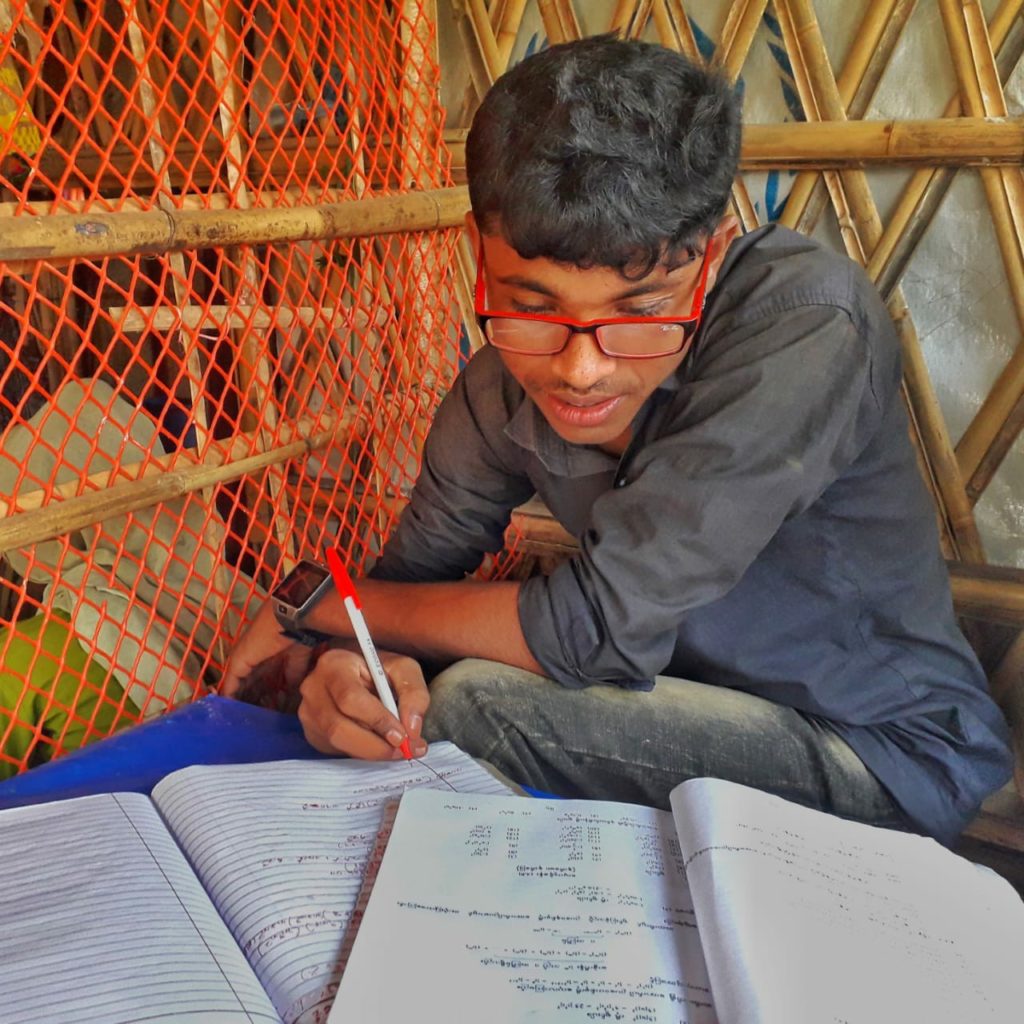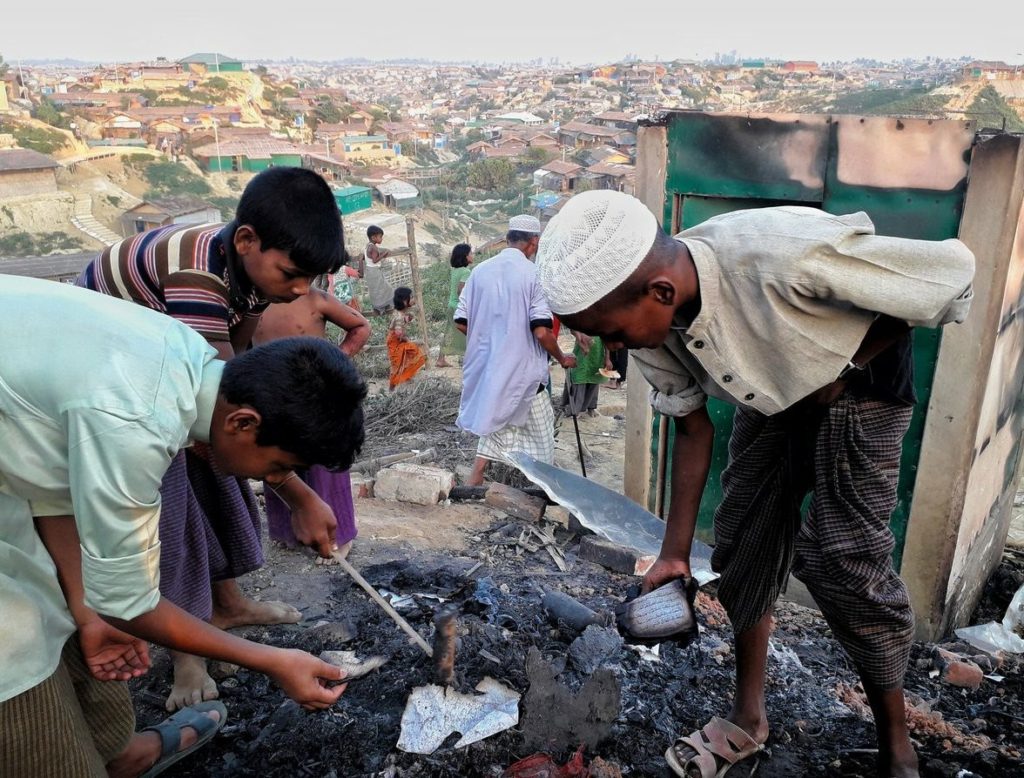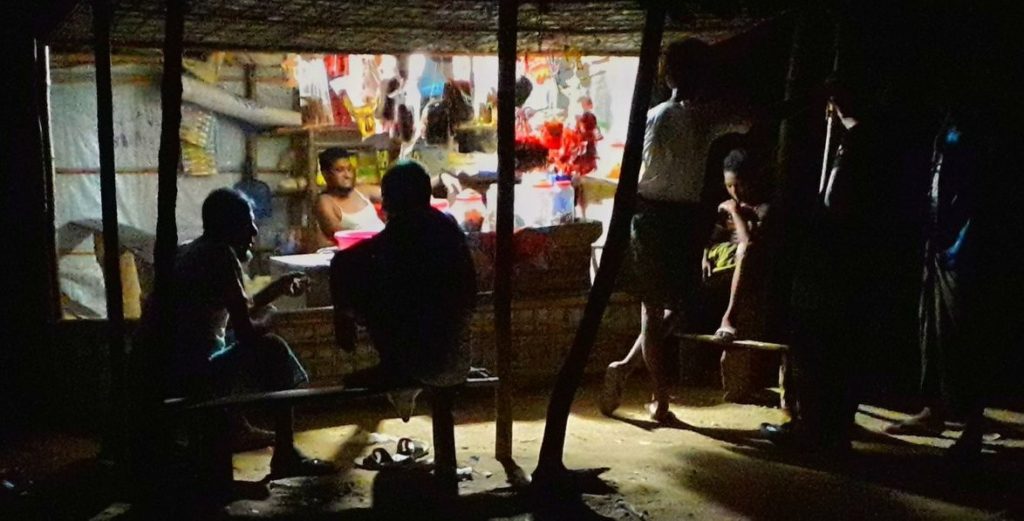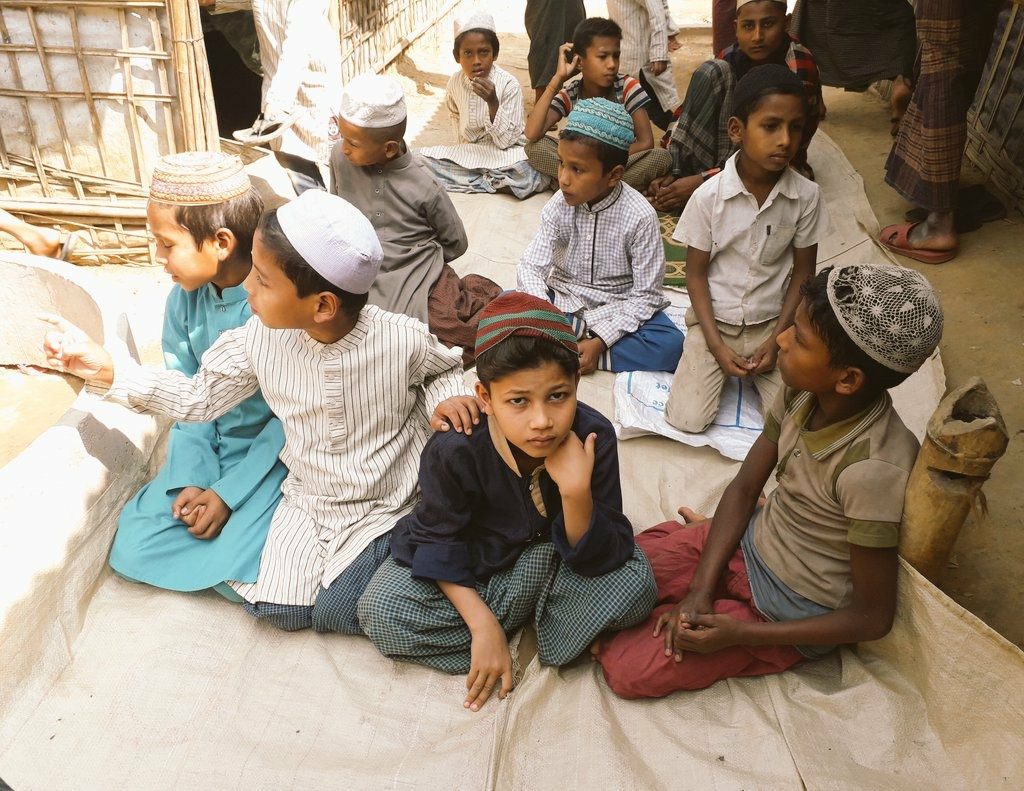My name is Azad Mohammed and I am a Rohingya photographer from Buthidaung Township, in Rakhine State, Myanmar. I fled with other Rohingyas after waves of violence from the Myanmar military in August 2017.
I am now living as a refugee in the largest refugee camp in the world. My childhood dream was to be a professional photographer which I am working towards. I want to show the world what it is to be a Rohingya refugee in the camps here in Bangladesh.
I finished my matriculation exam in 2013 in Myanmar but was blocked by the Myanmar government from attending university. Since fleeing to the camps here in Cox’s Bazar I have been training myself photography through watching YouTube videos on my phone. Here in the camp cell phone data is limited because it’s densely populated and overcrowded. Sometimes I download these YouTube tutorial videos during the day if I can manage sufficient money to buy data and watch them at night to learn more.
Another way I learn is by following social media accounts of famous photographers. From them I learn and get inspiration. It’s very difficult to learn about photography or have any kind of education in the camps. There are few training options for Rohingya youth which are not enough to be equipped.
Some people laugh at me because they see I use all my time being a photographer which is my dream. I have never lost hope. Rohingya people do not really understand why people do photography. There are some misconceptions as well. However, I believe that it’s my duty to show the world the experiences of stateless Rohingya people.
It is very hard here in the camps to be a Rohingya photographer. I have a small laptop and two Android phones which I am using as a camera for now. I want to buy a camera but it’s expensive. Moreover, here in the refugee camp, you need to get special permission from camp authorities to use a camera openly.
However, these difficulties have not able to halt me for once from doing photography. I take photos of life in the camps: people playing sports, talking at tea shops, standing in line to get rations, and kids playing throughout the refugee camp. In the camp there are more than one million Rohingya refugees in the camps. Life in the refugee camps is very difficult for Rohingya. Many Rohingya still lack adequate access to food, shelter, health care, education, and livelihoods. Education for Rohingya youth in the camps is critical. We have no access to formal education in Bangladesh yet.
It has been almost two years since Rohingya fled the Myanmar military’s ruthless attacks. Many of us are hoping and praying for a better future. One of my hopes is for Rohingya youth to be able to learn. We want to get opportunities to explore our talents like a free human being.






(Photo: Azad)

[Written by Azad Mohammed; Edited by Anis Islam]
Azad Mohammed is a Rohingya refugee and photographer. To reach Azad you can follow, Instagram: azadmohammedara; Twitter: @Azad_Ark .
Average Rating
One thought on “Life Through the Eyes of a Rohingya Photographer”
Comments are closed.
More Stories
General Ne Win and 1982 Citizenship Law
By Aman Ullah In 1962, General Ne Win led a coup d'état and established a nominally socialist military government that...
Assalamualikum i like Rohingyavisin